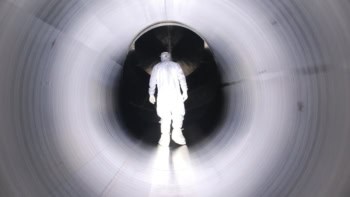Nuclear physicists have found further evidence that strange quarks can contribute to the structure of the proton. The latest data from the G-Zero experiment at the Thomas Jefferson National Accelerator Facility (JLAB) in the US lend further support to recent results from the HAPPEx experiment, also at JLAB, and other experiments in the US and Germany. The results could shed more light on the strong interaction that holds quarks together in protons, neutrons and other particles (Phys. Rev. Lett. to be published).
Quarks come in six different flavours — up, down, strange, charm, bottom and top. A proton contains two up quarks and one down quark that are held together by gluons, but occasionally these gluons can fluctuate into quark-antiquark pairs. Although these virtual quarks only exist for very short times, they can affect the properties of the proton, such as its magnetic moment. Since the strange quark is the next-lightest quark after the up and down quarks, it is the most likely to have a measurable effect.
One way to observe the influence of strange quarks on the proton is to compare measurements that probe the weak interaction with those that probe the electromagnetic force. In the G-Zero experiment, a high-energy beam of electrons was fired at a hydrogen target. The beam was polarised so that the spins of the electrons either pointed in the same direction as the beam or in the opposite direction. The team then measured the rate at which these electrons scattered off protons in the target.
The difference for the two beam polarizations was about 10 parts per million. This asymmetry occurs because the electromagnetic force conserves “parity” (that is, it does not change when all three directions in space are reversed), while the weak force does not.
According to the G-zero team — which includes physicists from Armenia, Canada, France and the US — this difference implies that strange quarks must be contributing to magnetic moment and charge distribution of the proton. The results agree with those recently reported by the HAPPEx experiment, the SAMPLE experiment at the MIT-Bates Lab in the US and the A4 experiment at Mainz in Germany.



